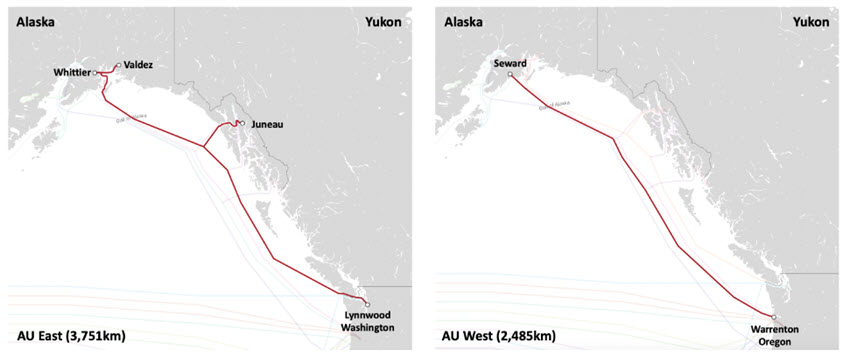North to the future, via improved connectivity
The last frontier, or is it?
Alaska is the largest state by land area often referred to as the “last frontier”, and rightfully so, given its rugged coastlines, forests, mountains, and wildlife. It’s also a highly connected state, in spite of the challenging landscape and climate conditions, allowing Alaskans to enjoy the virtual and the (great outdoor) physical worlds, often at the same time. Although Alaska is physically separated from the lower 48 states, it’s still connected to them (and the rest of the world) through the wizardry of modern telecommunications. As the world addresses the new frontier of digitalization, Alaska’s operators represent a new breed of pioneers – telecom pioneers.
The history of Alaska dates back many thousands of years when early settlers crossed the Bering land bridge to the west coast. The word Alaska comes from the Aleut word “Alaxsxaq” or “Alyeska”, which means "mainland", or more literally, "the object toward which the action of the sea is directed". These early settlers were the first Alaskan pioneers seeking new opportunities, similar to today’s telecom pioneers, which we’ll talk about below.
Alaska’s telecom pioneers
In the 1890s, Alaska was transformed when gold rushes attracted countless miners and settlers. Today’s new gold is connectivity, and the new Alaskan rush continues, albeit now in the virtual world of telecommunications. Just as early pioneers physically transformed Alaska, telecom pioneers are virtually transforming the largest state once again by connecting Alaskans to each other, to their favorite content, and the rest of the world. Alaskan telecom operators are ensuring that the last frontier remains a modern, highly connected state.
GCI, an Alaskan pioneer
GCI has been trailblazing since 1979, when it addressed disparities in communications across Alaska by becoming a long-distance phone service provider offering affordable options to communicate across the United States. Since then it’s quickly morphed into a communications service provider offering a variety of wireline (terrestrial, submarine) and wireless (cellular, satellite) telecom services to serve such verticals as education, energy, finance, government, healthcare, transportation, logistics, and others. Successfully serving evolving customer needs mandates ongoing modernization of their network assets with the latest one related to their submarine cables.

Figure 1: The first few feet of submarine cable going into Cook Inlet, Alaska (2011)
Their Alaska United (AU) East submarine cable interconnects the Alaskan cities of Whittier, Valdez, and Juneau to Lynnwood, Washington. Their AU West submarine cable connects Seward Alaska, directly to Warrenton, Oregon. The submarine cable lengths span 3,751km and 2,485km, respectively, to essentially erase the physical separation between Alaska and the lower 48 states. In the 1890s, it would’ve taken pioneers weeks or longer to travel these distances, overland or oversea. These distances are now traversed in the blink of an eye.

Figure 2: Alaska United (AU) East and Alaska United (AU) West Submarine Cable Networks
GeoMesh Extreme submarine network solution
To better address the latest bandwidth rush from wholesalers, the federal government, and content providers, GCI will be upgrading their AU East and AU West cables with our GeoMesh Extreme submarine network solution powered by our latest WaveLogic 5 Extreme optics, optimized for submarine networks. These submarine cable capacity upgrades will help GCI, and their customers, along their unique digital transformation journeys by best connecting users-to-content (in data centers) and content-to-content (data center interconnect), which is Alaska’s, and the rest of the world’s, next frontier.
To better manage their submarine and terrestrial network assets, GCI will use Ciena’s Navigator Network Control Suite (NCS) domain controller offering advanced capabilities (ex. Liquid Spectrum, Channel Margin Gauge) to facilitate and improve network services planning for a quicker time-to-market and time-to-revenue. A holistic and unified view of their interconnected submarine and terrestrial network assets provide GCI with improved insights into the ongoing health of their end-to-end network. This insightful visibility helps to better serve their customers.
The ongoing Alaskan “gold” rush
Just as early pioneers transformed the rugged Alaskan landscape, today’s telecom pioneers are transforming the digital Alaskan landscape. Telecom operators across Alaska, such as GCI, are modernizing their network assets on an ongoing basis to better serve their customers with leading-edge technology, even in the last frontier.








